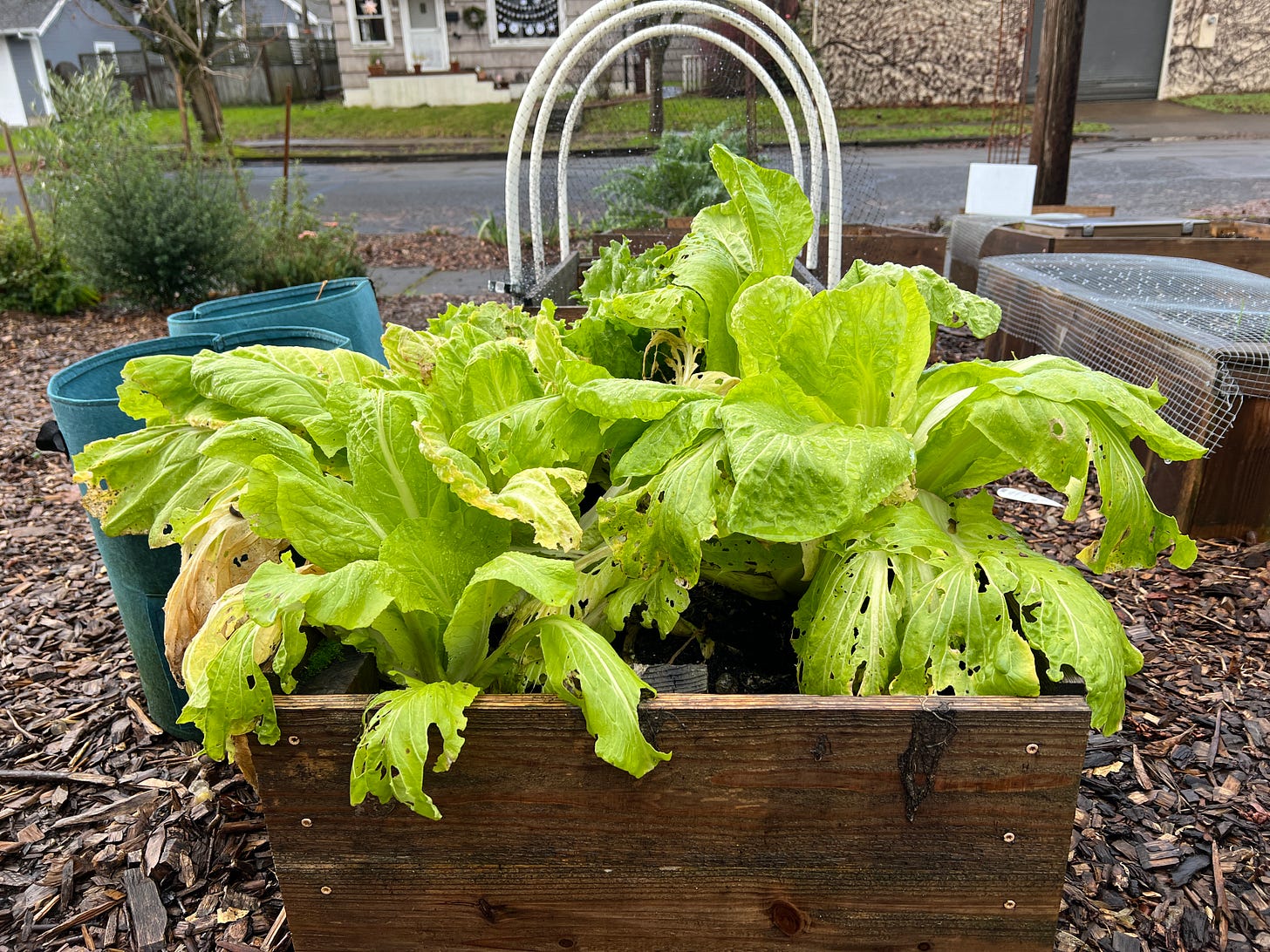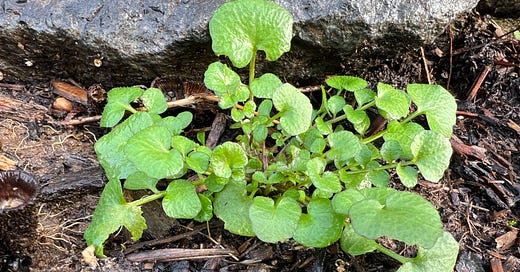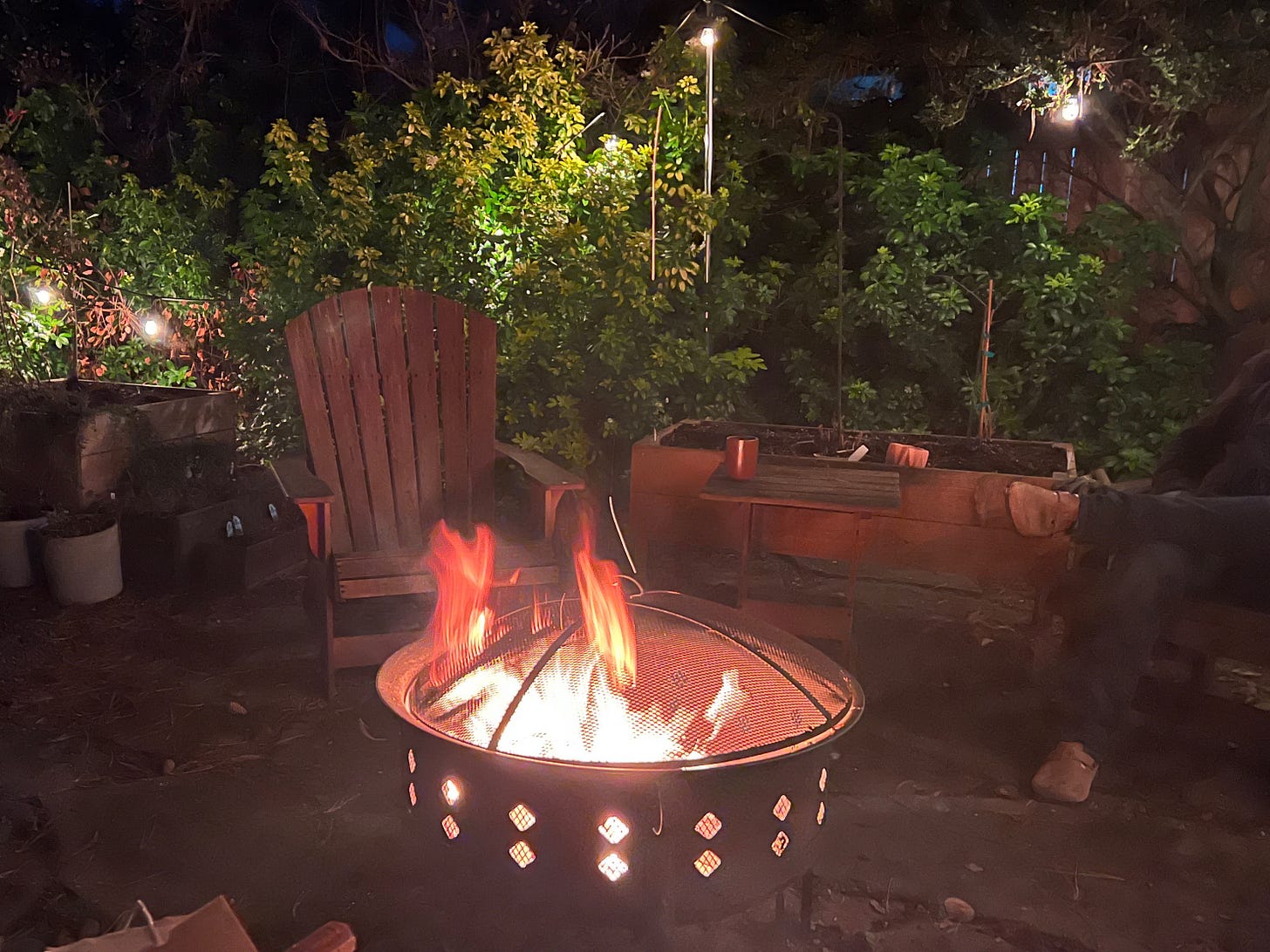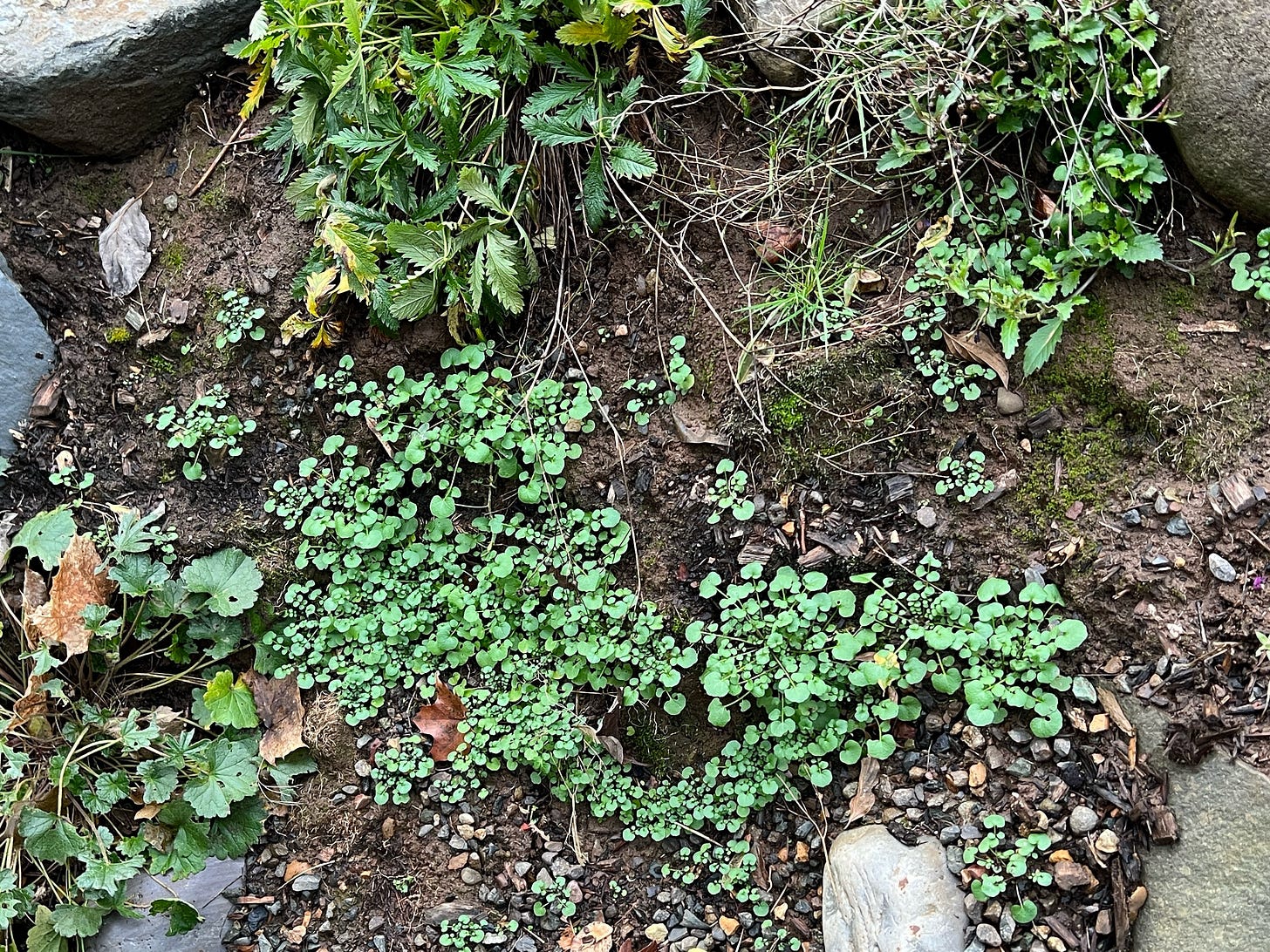Of all the December holidays that I celebrate or have celebrated, winter solstice is the only one that I feel in my body. Here in the rainiest, grayest corner of the United States, solstice marks the apex of a heavy darkness that descends in November. We spend months preparing for the shortest day of year: full-spectrum light therapy, airplane tickets, replenished flannel stocks.
That said, it has been a relief to move back to a region with four proper seasons. All my memories from the quarter-century I lived in the Bay Area float, untethered, around the past, with few external cues to anchor them to. Did that happen in March or June? 1997 or 2015? Getting to know Portland as a landscape, not just a city, has helped me fall back in love with the endless novelty of the changing seasons.
There is a cost, of course, and even born-and-bred Pacific Northwesterners will complain that living here means embracing the four months of low light. A small part of me begins dreading the winter solstice on June 21: Even through the brightest, hottest months of the year, my body tells me the mornings are starting later and later. By contrast, in the weeks leading up to yesterday, I got a little giddy thinking of the solstice. It won’t get any darker than this, I’ve been telling myself. The cycle is about to turn.
Observing the gloomy green world around my house, it has also become clear that calling the year a cycle of death and rebirth imposes an oversimplified, human order onto it. The land around me is always sprouting and flourishing and withering and rotting, simultaneously, in a slow syncopation I can't yet predict.

The greens still growing in my raised beds this December, for instance, are a raggedy bunch. Are they dead? Should they be dead? The Chinese cabbage looks particularly despondent — drooping leaves spotted with bite holes from September's insects. Pushing up against the cabbage are bunches of brown-edged escarole I should really have picked last month. A few spiky chicory sprays are holding steady, and the daikon appear to have endured November's succession of frosts. Only the slow-growing arugula I planted in October radiates chlorophyll-rich health. (Then again, arugula is the Nordic rat of salad greens. In a century, long after Oregon's climate resembles that of today's Baja Peninsula, the thickets of arugula that have escaped their beds and taken over the hillsides will sustain our great-grandchildren.)
I keep waiting for my winter greens to finally croak, and simultaneously chide myself for not finding a use for them. I have every intention of making kimchi and bean-escarole soup, and yet I wake up each morning, look out over the garden, and sigh. Ambition is hard to find in Pacific Northwest winters.
Last night, we marked the longest night of the year by building a fire in the backyard and sitting around it, sweatshirts soaking up woodsmoke as we sipped warm, spiced cider. Given the 4:30pm sundown, we retreated to the dinner table by 7:30.
Despite early frosts and a week of flooding, El Niño has given Portland a relatively mild winter, and the yard is already covered in new starts. Next spring's seedlings blanket the wildflower patches I first planted in the fall of 2022. They are so tiny that I worry a February ice storm will kill them off. I suspect that the plants' own wisdom will keep the sprouts alive, which means my lawn is primed to explode with flowers, invited but unmanaged, next April.
A few weeks ago, an uninvited guest appeared on the rounded slopes of our rain garden. Hairy bittercress (Cardamine hirsuta) is a wild green whose name I learned last year. I was hoping to see some of it in the spring, but it showed up even earlier.
Though this invasive is not a noxious weed like shiny geranium or Himalayan blackberry, many gardening writers rail against it. Bittercress reproduces fast and spreads far once it flowers, they warn. The need to control it is urgent.
Foragers across the English-speaking Internet have a different take. The tiny rosettes of round leaves are neither hairy nor particularly bitter, but more akin to the curly cress I cultivated a few summers back. Bittercress is an ideal green to forage: easy to identify, plentiful, and actually tasty — especially right now, when winter weather and youth keep its peppery flavor in check.
This morning, once the rain let up, I wandered out into the damp gray garden and gathered a small bowlful of bittercress, snipping off the bottom of each rosette and washing the tiny sprigs in ice-cold water. I dressed the cress in a simple vinaigrette and heaped it onto a toasted bagel (one of Josh Fairbanks’, btw) spread with cream cheese. A snack to celebrate the undying depths of winter. A taste of the first lengthening day of the year.
****
Quick, sort of weird note to end the year with: Thank you for reading my monthly newsletter! I am so grateful to everyone who has liked my posts, written to me, or told a friend about A Place Is a Gift. I have more projects in the works for January and February, but I am also following the newsletter author community's demands that Substack detect and elminate white-nationalist content. If Substack won't ban Nazis, which is an odd thing to have to write, I will look for ways to migrate this free email newsletter to another platform. I'll keep you posted.








I have the same thoughts as the solstice approaches here in Maine. It's all uphill from here!, I think, even though so much winter still lies ahead. And I share your contentment at being back in a place with proper seasons. It's nice to read your words, and I miss you. Sending some light from here. xo
Happy to hear you are not into white supremacy.